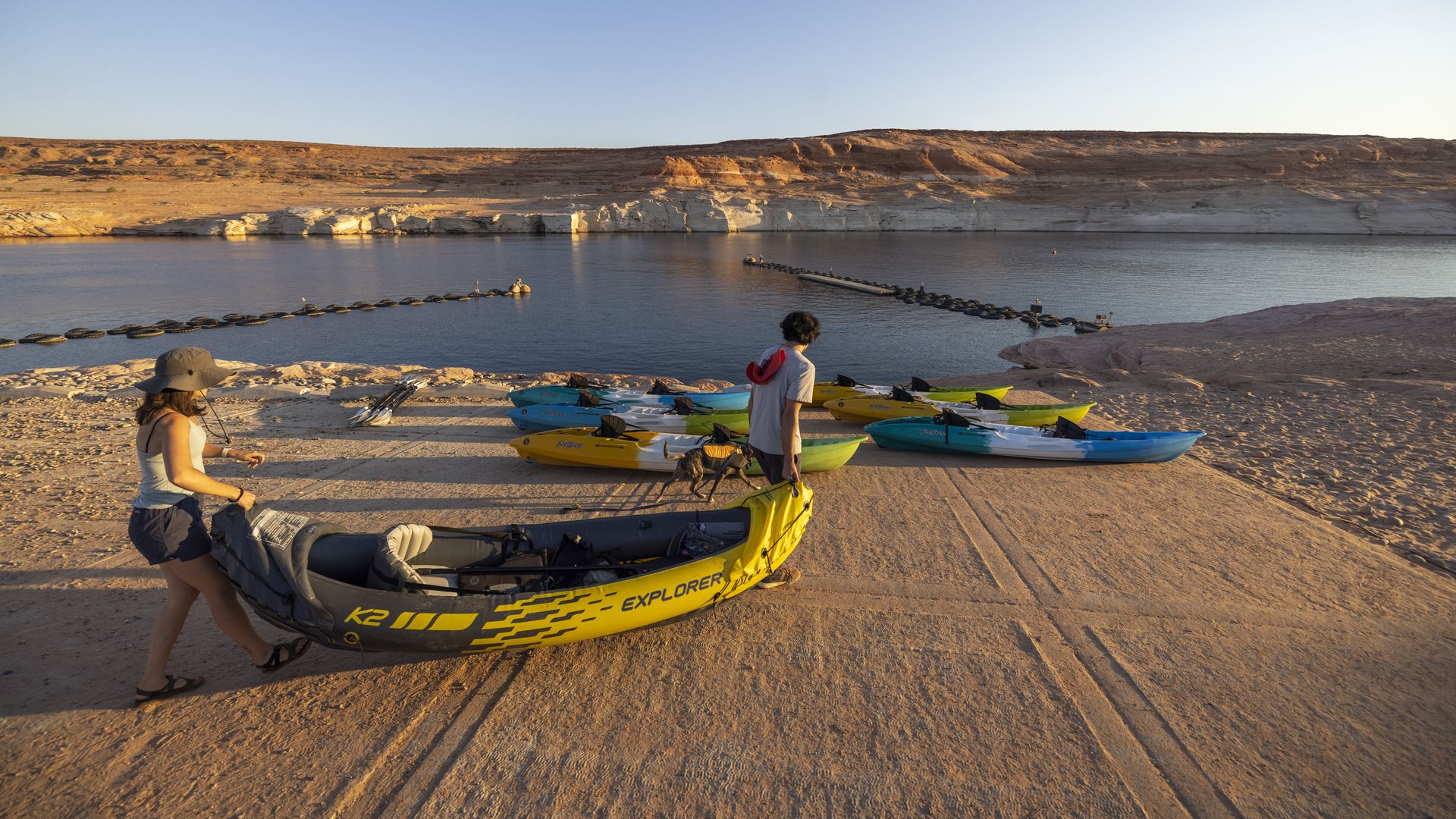Rebecca Falconer

Kayakers at a boat launch ramp Page, Arizona, on July 3, which was made unusable by record low water levels at Lake Powell as the drought continues to worsen near. Photo: David McNew/Getty Images
Two significant U.S. lakes, one of which is a major reservoir, are experiencing historic lows amid a drought that scientists have linked to climate change.
What's happening: Lake Powell, the second largest reservoir in the U.S., has fallen to 3,554 feet in elevation, leaving the crucial lake on the Colorado River, at 33% capacity — the lowest since it was filled over half a century ago, new U.S. Bureau of Reclamation data shows.
Utah's Great Salt Lake, the biggest saltwater lake in the Western Hemisphere, saw levels plunge in the south roughly an inch below the previous record low of 4,191.4ft above sea level, set in 1963, the U.S. Geological Survey announced Saturday.
Wildlife is already suffering from the decline, birds and shrimp in particular.
Threat level: Utah Department of Natural Resources executive director Brian Steed noted in a statement that while the state's lake has been gradually declining for some time, "current drought conditions have accelerated its fall to this new historic low."
USGS Utah Water Science Center data chief Ryan Rowland wrote that based on current trends and historical data, it's anticipated that "water levels may decline an additional foot over the next several months."
A major threat to Lake Powell, on the Utah-Arizona border line, is that demand for water across seven U.S. and two Mexican states "that rely on the Colorado River has not declined fast enough to match the reduced supply," noted Brad Udall, a climate scientist at Colorado State University, to Cronkite News.
"The hard lesson we're learning about climate change is that it’s not a gradual, slow descent to a new state of affairs," Udall added.
The big picture: Lakes across the country are under strain from a mega-drought.
95% of the West is experiencing drought conditions — and over 28% is facing exceptional drought, according to the U.S. drought monitor.
No comments:
Post a Comment